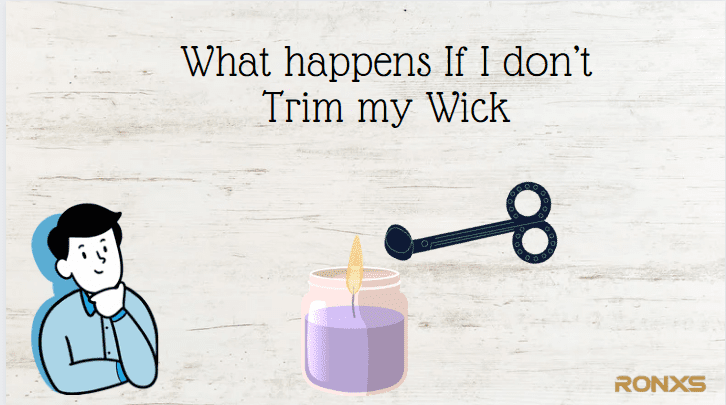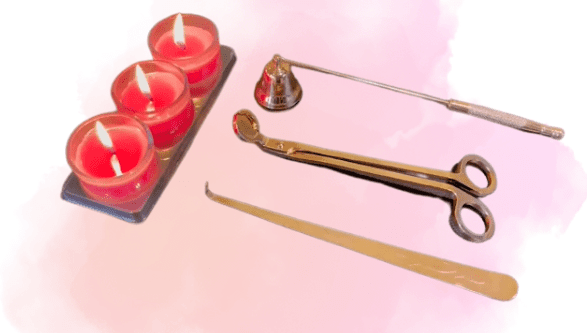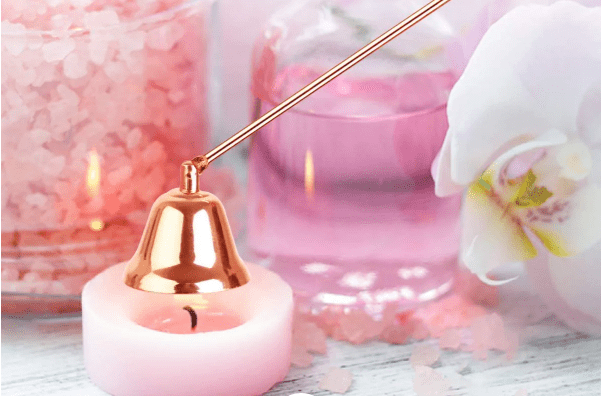What Happens If I Don’t Trim The Wick Of The Beautiful Candle?
You’ve been doing yourself and your scented soy candles a disservice if you’ve just been fighting and blowing out your candles without performing any sort of maintenance. Your candle will burn longer and more evenly if you just take a few simple precautions, like cutting the wicks and shielding the wax from dust.
Learn the benefits of wick trimming and get six additional candle care suggestions. A longer wick results in a bigger flame, which melts more wax and provides the candle with more fuel. Because there is more fuel, there may be incomplete combustion, which produces more soot and makes your candle container unclean and black.

The Benefits of Trimming the Candle Wick
It would seem that trimming a candle wick wouldn’t have a big impact on how much you used the candle. After all, trimming the wick is optional; your candle will still burn regardless. Although this is technically correct, the simple act of trimming the wick can help your candle last up to 25% longer and preserve its attractive appearance.
A longer wick results in a bigger flame, which melts more wax and provides the candle with more fuel. Because there is more fuel, there may be incomplete combustion, which produces more soot and makes your candle container unclean and black.
Long wicks tend to curve slightly at the top as they burn, which gives them an uneven shape and causes them to waver, which makes it harder for soot to form.
The amount of melted wax that the candle has access to can be managed by keeping the wick trimmed, which reduces the amount of soot the candle produces. The trimmed wick also aids in a more even burn, which reduces soot production and increases candle life. Reducing the soot also makes it simpler to reuse the candle jar after the candle has burned out.
Extinguish the flame after each four-hour candle burn, then allow the candle to drop to ambient temperature. Larger candles often require two hours to burn down. After that, before relighting the candle, reduce the wick to between one-eighth and one-fourth of an inch.
Initially, scissors can be used, but as the candle burns out, nail clippers or even a professional wick trimmer will be simpler to use.

Various Candle Care Advice
There are more things you can do to take care of your candle and extend its life besides just trimming the wick. Your soy or coconut wax candle will look just as good as the day you got it if you follow these tips:
- Do let the candle burn for around two hours the first time. By doing this, you may be sure that the entire initial layer of wax melts and then solidifies again. Only the region immediately surrounding the wick will melt if the candle is not burned for a sufficient amount of time. This may result in tunneling, in which the candle’s outer ring of hard wax remains after only the candle’s center has burned down.
- If the wick slides or bends, recenter it. Blow out the flame if the candle wick appears to have moved during burning, then allow the candle to cool. After that, straighten it up by moving it toward the center with your fingers, tweezers, or tongs. Shortening the wick will also prevent it from toppling over.
- Keep the candle away from drafts. Unexpected gusts make the candle burn unevenly and perhaps extinguish the flame entirely. Avoid vents, fans, wide-open windows, air conditioners, and any other places where a flame can be exposed.
- I fail to see why you wouldn’t, dirt and other particles will gather on the top. Keep the top clear by putting it in a covered cabinet or changing the lid, if one exists. If there is any dust on it, use a damp cotton pad to gently wipe it off before lighting it once more.
- Avoid allowing soot stains to build up on the glass because doing so will make them eventually far more difficult to remove. To remove the soot stains, blot a small amount of soap onto a damp cotton pad and rub the pad over the soot. Before lighting the candle once more, let the glass completely dry.

Other Candle Lighting Advice
- Numerous candle makers advise limiting candle burning to four-hour intervals.
- When there are only two inches of wax left, put out the candle. According to the National Candle Association, this rule applies to tapers, pillars, and large glass jar candles.
- Only four to six hours are possible with little tea lights.
- As blowing out a candle can produce too much smoke, many candle makers advise putting out flames with a snuffer or by dipping the wick into the wax pool.
- And of course, always keep candles in your sight when not using them.
- Candles shouldn’t be frozen since the wax could crack. Candles should be kept at a cool to moderate temperature.
How to Handle a Too-Short Wick
If you’ve cut the wick too short for it to light, you can expose more wick by slowly pouring out the molten wax after melting the wax around it with a wand lighter. Alternately, carefully remove the wax covering the wick with a butter knife.

Conclusion
Regular wick trimming is required, ideally following each candle use. Using a toenail cutter, wick trimmer, scissors, or your fingers will work for this. An effective wick trimmer will be increasingly useful as the candle melts down.
But you can start with scissors. The wick should be trimmed back by one-fourth inch to ensure that the candles burn steadily and brilliantly. Never leave candles burning for more than four hours at a time to extend their lives.






